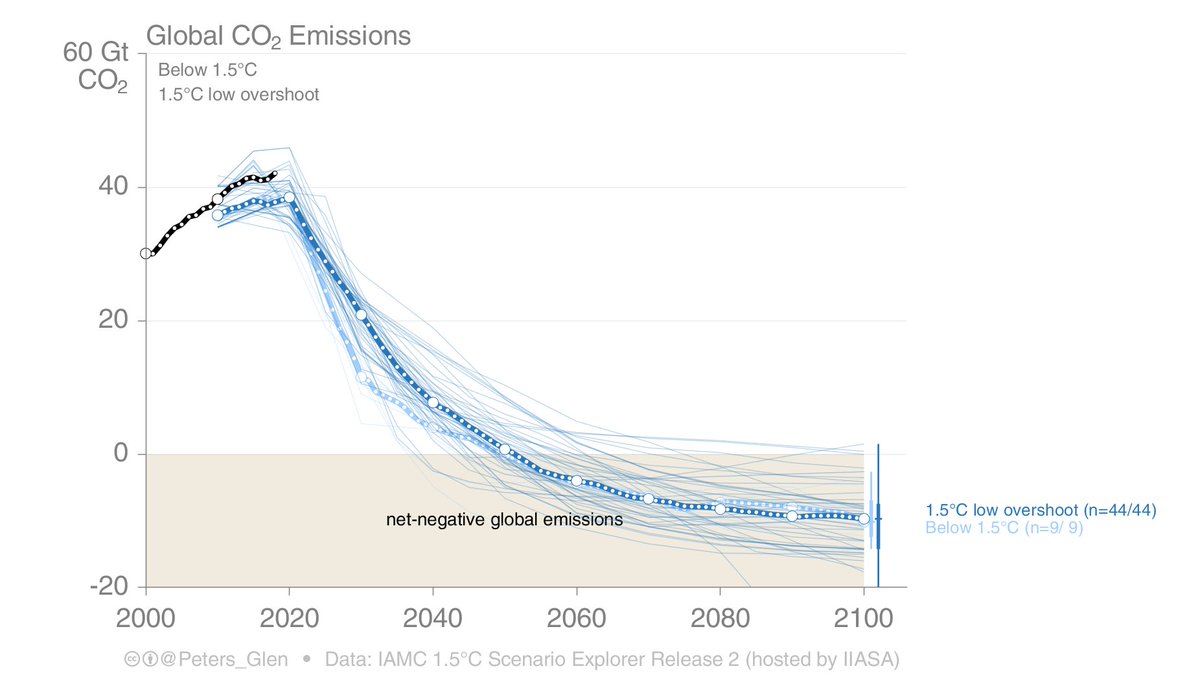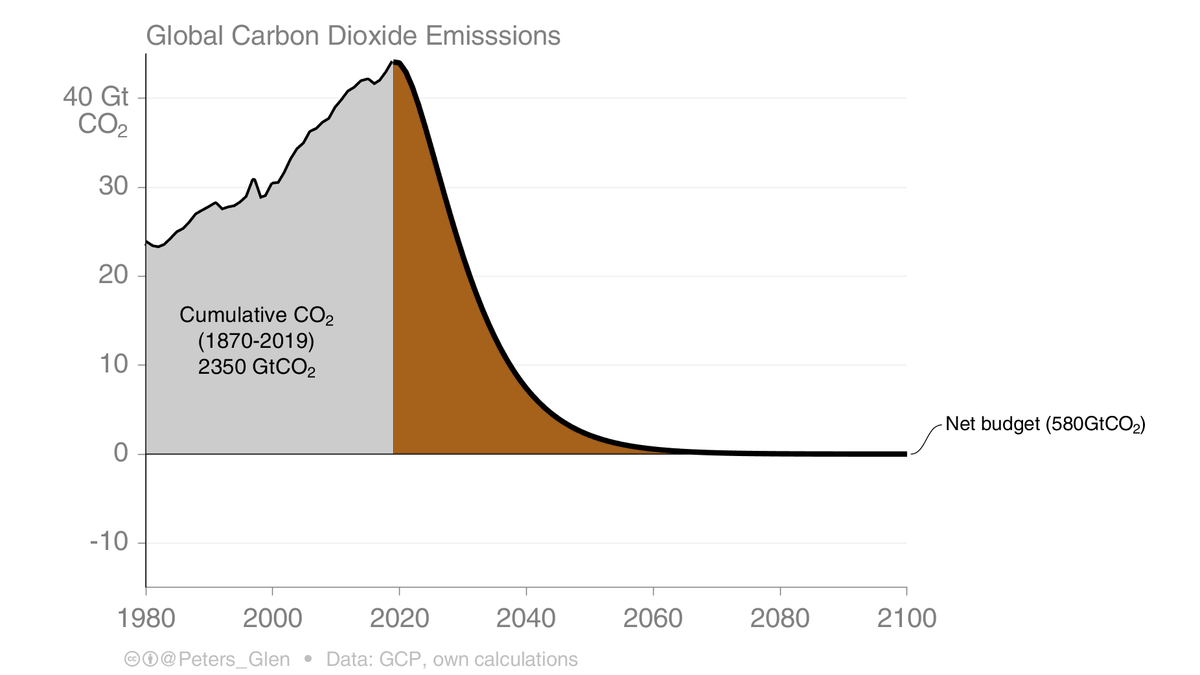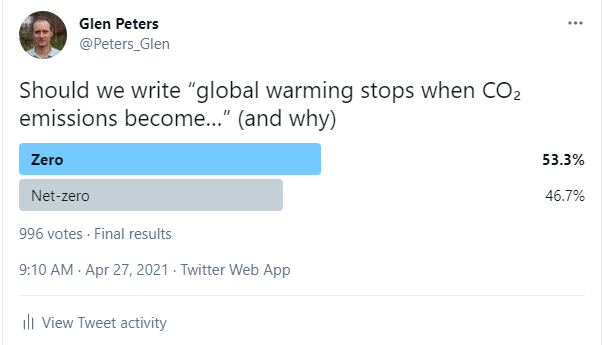
Cumulative CO₂ emissions explain most future global warming, assuming sufficient action on non-CO₂.
Distributing a remaining carbon budget of 500GtCO₂ with a linear decline (black) leads to net-zero ~2045.
Depending on short-term action, many net-zero years are possible.
1/
Distributing a remaining carbon budget of 500GtCO₂ with a linear decline (black) leads to net-zero ~2045.
Depending on short-term action, many net-zero years are possible.
1/

If emissions decline exponentially, also in the 'Raupach curve', net-zero emissions never occur & the remaining carbon budget is never exceeded. Net-zero is not a necessity, but a modelling outcome.
The 'Raupach curve' is explained here: iopscience.iop.org/article/10.108…
2/
The 'Raupach curve' is explained here: iopscience.iop.org/article/10.108…
2/

Most scenarios are based on cost-optimisation to a 2100 target, which means the temperature can peak & decline, overshooting the 2100 target before returning to it by 2100.
These scenarios are where the net-zero ~2050 come from (2059 in this figure).
3/
These scenarios are where the net-zero ~2050 come from (2059 in this figure).
3/

This all means that net-zero emissions are needed, but the net-zero year depends on how the remaining carbon budget is distributed over time.
carbonbrief.org/explainer-will…
4/
carbonbrief.org/explainer-will…
4/
Scenarios have been performative & force us to think about net-zero in a particular way.
There are scenarios that don't reach net-zero CO₂ emissions until after 2100, but we only hear about the medians, which are scenarios based on 2100 targets & allowing overshoot.
4/4
There are scenarios that don't reach net-zero CO₂ emissions until after 2100, but we only hear about the medians, which are scenarios based on 2100 targets & allowing overshoot.
4/4

• • •
Missing some Tweet in this thread? You can try to
force a refresh











